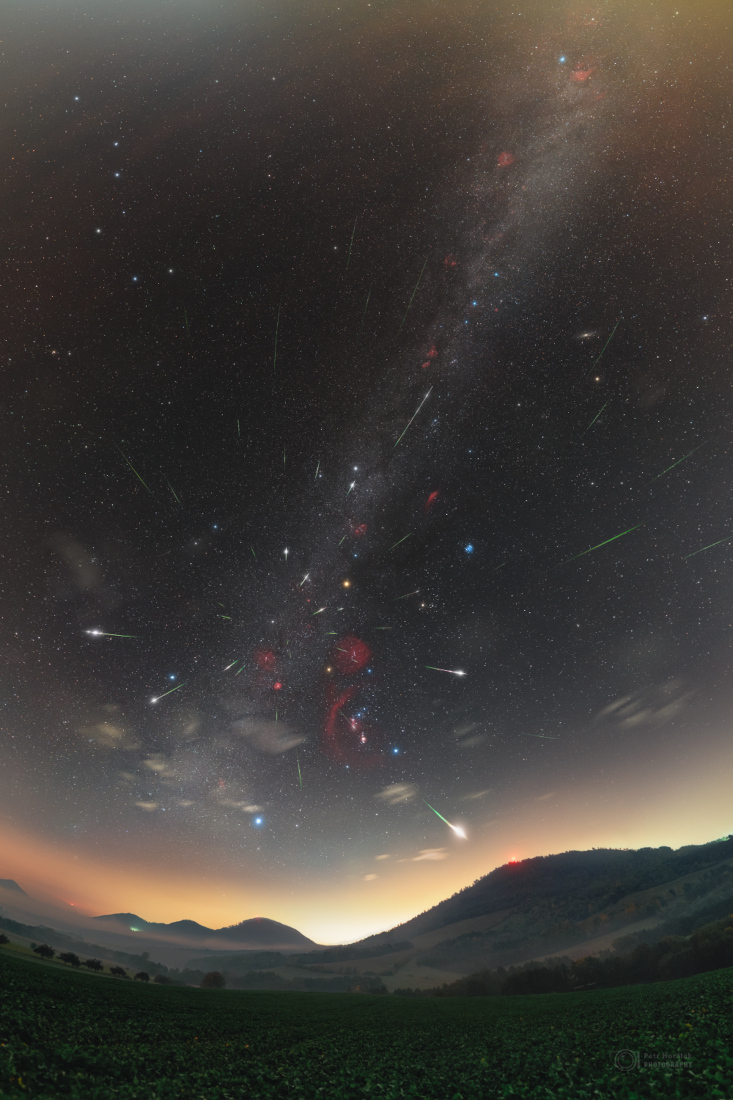2022年10月28日
Seven Years of Halley Dust
Image Credit & Copyright: Petr Horalek / Institute of Physics in Opava
Explanation: History’s first known periodic comet Halley (1P/Halley) returns to the inner Solar System every 75 years or so. The famous comet made its last appearance to the naked-eye in 1986. But dusty debris from Comet Halley can be seen raining through planet Earth’s skies twice a year during two annual meteor showers, the Eta Aquarids in May and the Orionids in October. Including meteors near the shower maximum on October 21, this composite view compiles Orionid meteors captured from years 2015 through 2022. About 47 bright meteors are registered in the panoramic night skyscape. Against a starry background extending along the Milky Way, the Orionid meteors all seem to radiate from a point just north of Betelgeuse in the familiar constellation of the Hunter. In the foreground are mountains in eastern Slovakia near the city of Presov.
Tomorrow’s picture: a dark and spooky nebula
七年的哈雷尘埃
图像提供与版权: Petr Horalek / Institute of Physics in Opava
说明: 人类所知的第一颗周期性彗星哈雷(1P/Halley),每75年左右会回访太阳系内围。而这颗著名的彗星,上次肉眼可见的回归是在1986年。不过,哈雷彗星的尘埃碎片每年2次会洒落到地球的天空中,形成5月的宝瓶流星雨和10月的狮子流星雨。上面这幅夜空全景图像,就叠合了2015年至2022年之间,摄于狮子流星雨10月21日极大期附近的47颗明亮流星。这些以银河附近的繁星为底衬的猎户流星,则看似都辐散自猎户座参宿四北侧的辐射点。图像前景为洛伐克东部普雷索夫市附近的山峦。
明日的图片: a dark and spooky nebula



